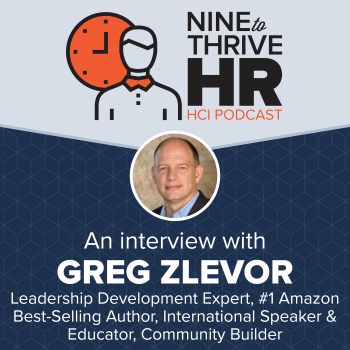Backstage with Greg Zlevor: Q&A with a 2020 People Analytics Conference Speaker
Even the most refined talent analytics strategies will struggle to achieve success without clear alignment to larger organizational objectives. Talent initiatives developed in a vacuum struggle to break free, resulting in disappointing metrics, dissatisfied employees, and negative impacts on the business.
Coming up in March, HCI will host the 2020 People Analytics & Workforce Planning Conference in Miami. Event attendees will learn firsthand the value of strategic alignment with business goals and how aligning talent strategy with the business is critical across all facets of talent management and necessary for maintaining a competitive edge.
Kicking off the event with the first keynote on Day One is Greg Zlevor, President and Founder of Westwood International and FOG (For Our Growth). With more than 25 years of experience in executive leadership development and education, Greg has served as a coach, consultant, and facilitator for companies across Europe, Asia North America, South America, and Australia.
Greg will be presenting "Understanding and Aligning with Your Business Strategy" at the conference. We caught up with Greg for a short interview on our podcast, Nine to Thrive HR, to learn a little more about how to support the process of alignment as a leader and as a follower. Here's what we've learned so far:
What does strategy mean to you? What are some common barriers to achieving alignment and executing on a strategy?
GREG: The way I think of it, strategy is really the way the company is going to achieve its goals. Those goals usually include, “How do we meet the customer’s expectations?” or “How do we sustain a competitive advantage in the marketplace?”
I think the biggest pitfall is that people—often leaders and executives—may think that the idea or the strategy will carry the day. In fact, I recently worked with an executive team facing the challenge of building an organizational strategy. Once they achieved internal consensus, they distributed the strategy mostly through email and an all-company meeting. For most people, it wasn’t even in person—it was online.
Register Now: 2020 People Analytics & Workforce Planning Conference
What’s the missing link here?
GREG: For the executive team to reach a point of consensus, it took a lot of energy. Every team member was allowed to have a voice, have input, debate, chew on, struggle with, and eventually get behind the strategy.
What they failed to consider is that achieving consensus on the executive team was a highly collaborative process. In order for the rest of the organization to buy in, they also need to be a part of the process. The more they are involved, the more they understand, and the easier it is for them to align and follow through on that strategy. I can’t tell you the number of times I’ve seen this mistake. The executive or leadership team spends all this time and energy developing the strategy, but then doesn’t create a parallel process for the rest of the organization to get on board.
Creating an organization-wide process for achieving strategy buy-in is a huge job. What can leaders and HR do to help?
GREG: One technique is so basic and simple, yet so impactful, that people can begin to use it right away.
Put the strategy on paper. If you can summarize the strategy on one page, it’s easier for people to understand how their work contributes. Then, use that document to drive participation and effectiveness during meetings.
When I work with teams or organizations, I ask how much time they spend in meetings. The further up people go in an organization, the more time they spend in meetings. For mid-level managers up to executives, up to 50% or more time is spent in meetings.
At the beginning of every meeting, take a few minutes to review the one-pager. This will constantly reinforce the strategy and allow the desired outcomes of the meeting align with overall strategic goals. Be clear about what the meeting objectives and desired outcomes are. I would go as far as to say, never start a meeting without it!
Explore: Strategic HR Business Partner Certification Program
Some of my more advanced groups even allow a minute or two for participants to journal or otherwise make notes regarding how they will contribute to the meeting, and how those contributions align to the larger goals outlined on the strategy document.
What we’re really doing here is changing a habit. It’s a simple technique that it doesn’t cost anything, yet it reinforces the strategy across all levels of the organization and can drive strategic alignment much more quickly.





